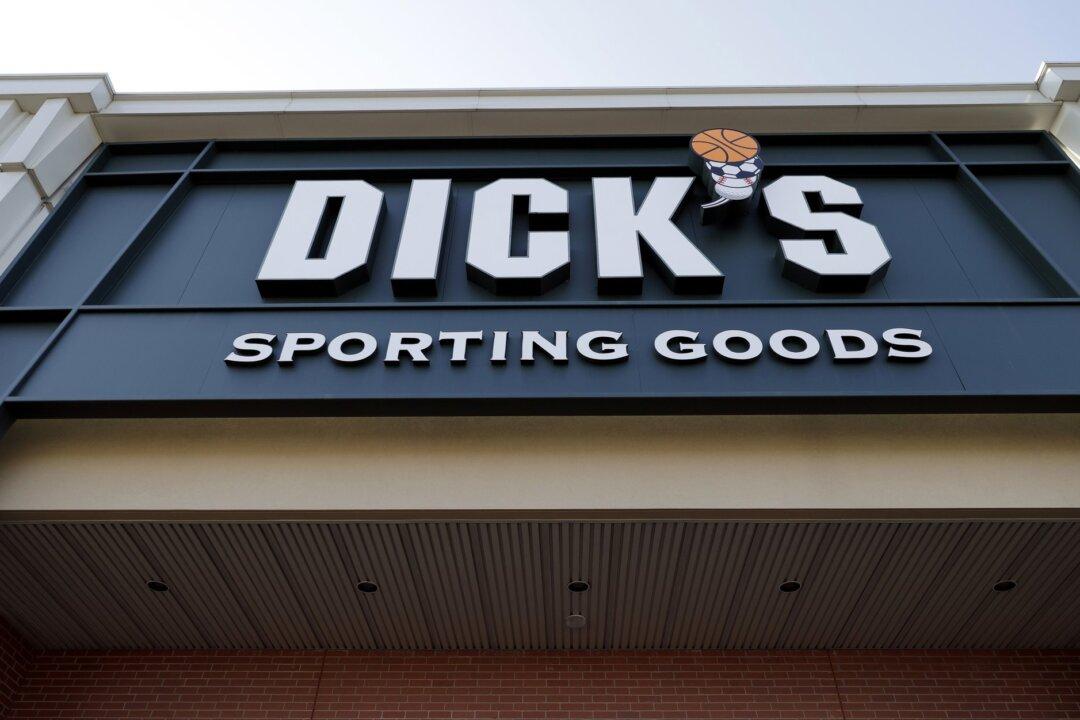Dick’s Sporting Goods saw earnings plummet 23 percent in the second quarter due to a surge in organized retail theft and an attempt to sell off excess inventory.
The company slashed its earnings guidance for the year, warning that retail theft was hurting its business and would lead to lower annual profits.





